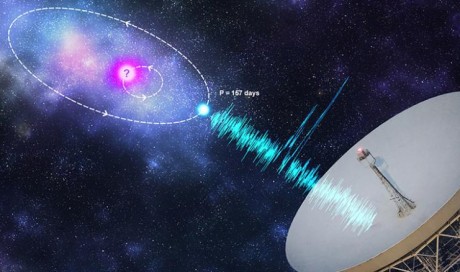Astronomers have caught a massive black hole letting out a "double burp" after bingeing on hot gas.
When cosmic gas comes near one of these sinkholes, it gets sucked in - but some of the energy is released back into space in the form of a burp.
Now, the Hubble and Chandra space telescopes have detected a new belch emerging from a black hole located about 800 million light-years away.
But they saw a remnant of another belch that occurred 100,000 years earlier.
"Black holes are voracious eaters, but it turns out they don't have very good table manners," Julie Comerford, from the University of Colorado, Boulder, told the 231st American Astronomical Society meeting in Washington DC.
"There are a lot of examples of black holes with single burps emanating out, but we discovered a galaxy with a supermassive black hole that has not one but two burps."
The burp itself consists of a stream of high-energy particles that is kicked back from the black hole.
Supermassive black holes are the largest type and are found at the centres of nearly all big galaxies. X-ray emission from the galaxy in question - called SDSS J1354+1327 - was picked up by the Chandra telescope, allowing researchers to pinpoint the location of its central black hole.

Image captionThe Chandra space telescope was used to pinpoint the location of a black hole at the centre of the galaxy
Hubble was able to show them that a cloud of blue-green gas extending away from the black hole represented the aftermath of an earlier burp. They found that electrons had been stripped from atoms in the cone of gas and surmise that this was caused by a burst of radiation from the vicinity of the black hole.
In the meantime, it had expanded 30,000 light-years away from the black hole itself.
But the astronomers found a little loop in the images; the sign of a new belch emerging from the cosmic sinkhole.
...[ Continue to next page ]
Share This Post














